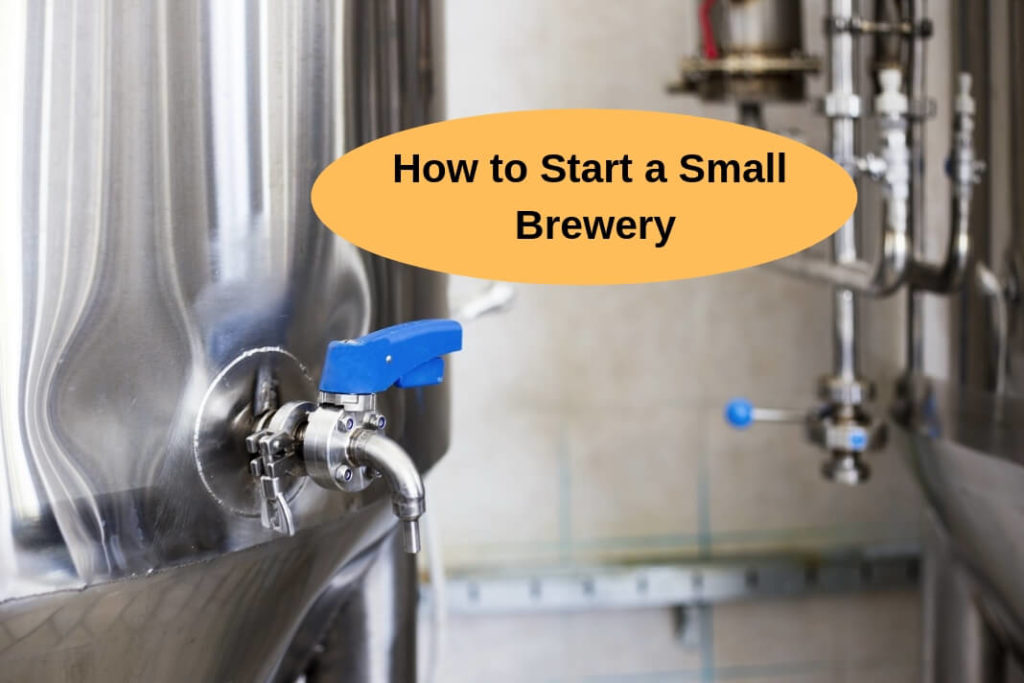
You are not alone if you have been daydreaming of brewing beer for a living. Craft brewing is one of the leading and most widely explored industries of the era. With more than 1000 new breweries opened in the last year in the US alone, it should be a good reason to own your own brewery. However, the growing numbers add a sobering concern: increased competition. Heavy competition and newcomers trying to break through the market boils down to only one thing: if you want to be a leader and make a profitable income, you have to consider many other things that go into launching and running a craft brewery.
So, if you are bored with your 4 ft. by 4 ft. cubicle life and want to start something of your own, and if you are interested knowing what it takes to start a good brewery, read this article for we have broken down the major steps involved in getting the business started.
Know Your Industry
To be successful in the industry, you need to produce no more than 6 million barrels a year. Your primary beverage should be beers of different flavors, including fermented traditional and other innovative ingredients. You cannot include flavored beverages and call them beer. Your produce should be authentic and original.
The craft brewing industry is broken down in different segments, based on the amount of beer being produced. You could categorize your business as follows:
- Brewpub: Your business will be a restaurant cum a brewery, where at least 25% of your produced beer should be sold on-site.
- Regional Craft Brewery: You will be an independent brewery that produces at least 15,000 million barrels of beer per annum. The maximum you can produce in here is 6 million barrels.
- Contract Brewing: You can own a normal business or a brewery brand that hires an external brewery to produce beer.
- Microbrewery: You could own a small brewery that produces less than 15000 barrels per annum. You will have to however sell 75% or more of your beer off-site.
The craft beer industry is continuing to grow, even if at a slower pace. Retail sales rate has increased by 8% in 2017. We would recommend that you start it either with a Microbrewery or a Brewpub.
You could start the business even without knowing how to brew beer. You can focus on other key operations while you hire an expert to deal with the manufacturing part. If you work in an already established brewing company, you will get a first-hand experience about the operations, production, distribution, and selling. A minimum experience of one year is enough to understand the process and start your own business.
Follow the steps one by one and we are sure, by the end of it, you will be able to launch a great craft brewery.
Steps to Start a Successful Craft Brewery Business
Step 1: Research the Market
Research your city, in terms of size and demographics, to get a sense about how many craft breweries could run successfully. If you are intending to make a particular type of beer, learn about its processes, its ingredients, its market demand, and its profit percentage.
Hire a consultant to carry this work for you, if you could. A consultant will help you analyze the market from all sides, help you find a location, help you hire the best staff and provide guidance in marketing and distribution.
Step 2: Financing Your Business
The brewery is one of the most heavily taxed industries in the world. It is also strictly regulated by the government. So, you may have to shell out more than you probably would have for another business. Based on your state policies, you may have to pay distributional charges and extra structural reinforcement charges.
The number of barrels you plan to brew will be one of the key determinants of your investments. If you want to start a microbrewery, you can make just a few 100 barrels a year and no one would question you. 1 barrel is equal to 31 gallons and 31 gallons equal to 320 glasses of beer. Equipment is another factor here. Used equipment will not cost you more than $100,000, while new equipment cost may go as high as $1 million. However, with brand new equipment, you can produce 30 barrels of beer as opposed to a 1 barrel of beer with old equipment.
Costs You Need to Consider while Figuring Out Finance:
Commercial Space: You can either purchase a location or lease it. When you purchase a location you will incur costs, like real estate fees, loan fees, building permits, insurance, and inspection charges and of course, maintenance costs. Leasing may be cheaper. It comes with additional expenses nonetheless, including rent, utilities, insurance, any build-out cost, and taxes.
Equipment: If you just want to sell beer, your equipment cost will not cross $100,000. However, if you include production, packaging, and distribution, the cost of equipment would double or triple. You can probably start by selling beer in a tap-room and explore your opportunities once you have break-even.
Apart from location and equipment, other areas where you may have to spend money include,
- Licensing
- Permits and
- Taxes
Step 3: Generating Finance
Most seasoned brewer owners advise the new entrants to start with private investors, such as friends, family etc. and secure a business line of credit. A business line of credit is much like a credit card of your bank. You can withdraw money from a set amount of credit, instead of loaning a lump sum. You should avoid debt as much as possible. You should think of going for bank loans only when planning to expand business operations and not before that.
You should be able to break-even by 6 months and get positive cash flow by the 9th month. This should be your aim. You could finance your brewery business via one of the following ways:
- Personal Savings
- Short-term Business Loans: Get quick small amounts of capital from banks, non-banks, or online lenders with repayment period lying between 3 months and 18 months. However, they have higher interest rates but a lesser wait period.
- Business Line of Credit: You will get immediate access to funds. Your business will be entitled by a pre-set limit that you can withdraw and repay as EMI. You will pay interest for the withdrawn cash and once the amount is paid, the limit comes up to set the original amount.
- Equipment Loan: You could finance the equipment purchases through secure equipment financing to manage cash flow and avoid diminishing your capital. The equipment would act as collateral and you could pay off the money through EMI.
- Crowd Source: You can begin an online crowdfunding campaign for your Brewery or collect donations from beer lovers.
- Personal Loans: They are easier to obtain, as lenders do not look at your business for loan processing. However, the rate of interest is much higher than business loans. They also have lower limits.
Step 4: Apply for Permits and Licenses
You must obtain special permits from the TTB within your country’s Department of Treasury. Look up their website, find the form, download it, fill it up, and apply for the permits online. You have to also apply for permits within your city. The permits and restrictions vary from city to city. For instance, some cities restrict alcohol production in a particular area and after a particular hour.
You will have to thoroughly research and do your homework before buying or leasing a place for your brewery.
Business owners producing malt-based beverages must obtain certain licenses to operate as well. A wholesale license, liquor license, and manufacturer’s license are must for brewery business.
You have to also visit the Food and Drug Administration and register with them for inspection of your place. In order to operate as a hygienic and healthy craft brewery, you need to follow the practices laid out by the FDA. The FDA inspector will make an impromptu visit to check your standard of operations, including employee hygiene, sanitation, cleanliness, and raw material quality.
Step 5: Buy Your Equipment
Brewing equipment is expensive, nevertheless, completely worthy. It is going to be your asset and your one-time investment. Therefore, we suggest that you invest in it properly and don’t opt for used machinery. If you outgrow your equipment or if you decide to close the business, you could sell the pieces off to new markets.
The basic equipment needs for your business include:
- Kegs, Bottles, and Cans to store and distribute your product.
- Mash or Lauter Tun, kind of tank that creates wort or bittersweet liquid the tank infuses the grains and water together for fermentation. After fermentation, the water turns in to beer.
- Boil Kettle to boil the wort.
- Fermentation Tank to ferment the beer. The wort is transferred into the tank once infused and boiled.
- Brite tank to clarify the fermented beer and carbonate it.
The size and the number of equipment will depend upon your business size and production quantity. This will also impact the overall cost and vice versa.
If you are looking for industry scale equipment, then you will have to choose a made-to-order option. This will probably take a few months. Used equipment is easily available in the market, but they are harder to maintain, which may lead to unnecessary expenses.
Wait period and long lead-time doubles when setting up a brewery. So, you may have to calculate the costs and plan everything else accordingly.
Step 6: Buy an Insurance Policy
You have to purchase a business insurance policy before you start your production, lest you are legally filed. You can never predict what may or may not show up while running your business. It could be a fire, a theft, a legal claim, or accident, injury to an employee, a construction failure, a malfunction, or anything that cause potential damage to your business and incur heavy costs.
So, you will have to own a limited liability insurance and a worker compensation insurance. You have to also consider buying a contents insurance to cover any disturbances in supply chain and in-transit insurance for delivery interruptions.
Step 7: Set up a Tap Room
The taproom is the place where most people will find your beer. So, you have to spend a lot of time and effort to design and erect a great tap room. The taproom will generate 90% of your sales. Moreover, the profit that you incur from taproom sales is much higher than what you earn from distribution, as it involves packaging and delivery.
The taproom is a gathering place to serve beer. You could meet customers, talk about your passion and help them explore and taste different types of beer. All of these lead to creating long-lasting brand value.
That being said, distribution has its own benefits too. It helps you to target a larger market and promotes your brand across a large sector of the audience.
Step 8: The Distribution
You won’t be selling your beer at a single location ideally. If you want to create a brand, you need to reach out to restaurants and bars and convince them to carry kegs of your beer to their customers. You could also try selling your beer to the local grocery store or liquor shops if your brewery has a bottling system.
However, you need to check with your state’s distribution and selling laws and oblige their requirements. For instance, some states permit the distribution of hard drinks only through certified distributors, while others allow brewers to self-distribute.
Usually, beers pass through three levels before reaching ultimate consumers. They include
- Producers, i.e. you or national brands and neighborhood breweries.
- Distributor, i.e. companies with a large fleet of transportation facilities to operate interstate and inner-cities.
- Retailers, i.e. off-premise and on-premise retailers, such as the liquor store and the supermarkets, and clubs, restaurants, and bars respectively.
Ensure to pay the taxes on time, including the sales, property, state excise, equipment, tangible personal property, federal, and income taxes. That is all folks. Hope we were able to process the entire thing easier for you. Comment your doubts and queries




